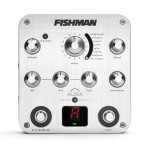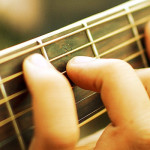Language
Acoustic Guitar: Simple Tips That Can Improve Your Sound
How do you achieve acoustic guitar EQ (Equalization) excellence? As a fresh acoustic guitar player, it can prove largely challenging to achieve a flawless sound or tone. The reason is due to the extremely dynamic nature of an acoustic guitar. Also, this instrument has numerous frequencies ranging from deepest lows to highest highs. Nonetheless, you have to be willing to understand how to use your acoustic guitar if you desire to have a quality tone. Below is a detailed description of tips to improve your sound.
 Fishman Aura Spectrum Acoustic DI Review[/caption]
[caption id="attachment_5067" align="alignleft" width="150"]
Fishman Aura Spectrum Acoustic DI Review[/caption]
[caption id="attachment_5067" align="alignleft" width="150"] Acoustic Guitar Maintainance Tips[/caption]
[caption id="attachment_4816" align="alignleft" width="150"]
Acoustic Guitar Maintainance Tips[/caption]
[caption id="attachment_4816" align="alignleft" width="150"] Acoustic Guitar Pickup Types[/caption]
Acoustic Guitar Pickup Types[/caption]
1. Understand the acoustic guitar’s purpose
When you are playing an acoustic guitar, your first priority should be to understand the purpose it serves for the song at hand. Does the acoustic guitar serve as a musical enhancement in your mix? If this is the case, you will want strum up or down across the strings and strike a balance in the low mid-range. If playing the acoustic guitar is what defines the song at hand, you should focus on using various EQ moves to achieve quality sound.2. Understand the context
In relation to tip number one, you have to consider the context in which you will use the acoustic guitar. There is no universal formula with respect to acoustic guitar equalization. But in any case, the objective is always to ensure that the sound produced by your acoustic guitar blends in with your mix. To create the desired acoustic guitar EQ, you have to make adjustments based on the sound of tracks in the mix. The acoustic guitar EQ for a hard rock track will be different from an RnB track.3. Start from the beginning
The actions you take right from the recording will have an impact on your acoustic guitar sound. If you have a great recording, you will have no problems with acoustic guitar EQ. In essence, you need to do the following: Choose a suitable location in the room If you choose a corner, your acoustic guitar sound will be of poor quality. This is because bass builds up at corners resulting in roaring and unclear recording. Assess the right spot by strumming as you walk from one spot to another to find out the spot where the sound seems well-adjusted and uniform. How do you place your mic? A slight adjustment in the position of the mic can greatly alter the sound of your acoustic guitar.4. High pass filter
When playing an acoustic guitar or any other guitar, the high pass filter is very crucial. The high pass filter (low cut) is basically an EQ move. What role does the high pass filter perform? It eliminates noise (low-frequency hum, noise in the studio/room) that can interfere with the It makes available low-frequency range in the mix to instruments such as kick drum and bass guitar.5. Use some light compression with slow attack setting
Acoustic guitars are generally transient heavy devices. This is what reinforces their importance. They imitate the chordal tone evident in an electric guitar and a percussive characteristic similar to a drum kit. Two bring out this two attributes of an acoustic guitar in your mix, use a bit of light compression with a keen focus on a slow attack setting. If the attack is relatively slow, you create plenty of time for effective transients. Doing so enables you to achieve a great tone without interfering with the transient.Final Thoughts ...
As a final point, if you follow these tips, you will improve your acoustic guitar sound while simultaneously ensuring it blends in with extra sounds in your mix.Your Turn to Sound Off!
What do you look for in an acoustic guitar?Let us know in the comment section below!
Other Stories You Might Like ...
[caption id="attachment_8375" align="alignleft" width="150"] Fishman Aura Spectrum Acoustic DI Review[/caption]
[caption id="attachment_5067" align="alignleft" width="150"]
Fishman Aura Spectrum Acoustic DI Review[/caption]
[caption id="attachment_5067" align="alignleft" width="150"] Acoustic Guitar Maintainance Tips[/caption]
[caption id="attachment_4816" align="alignleft" width="150"]
Acoustic Guitar Maintainance Tips[/caption]
[caption id="attachment_4816" align="alignleft" width="150"] Acoustic Guitar Pickup Types[/caption]
Acoustic Guitar Pickup Types[/caption]
